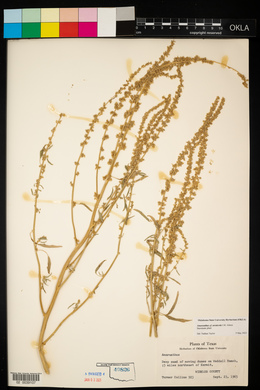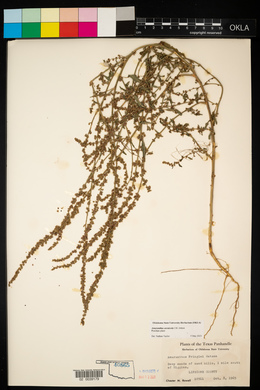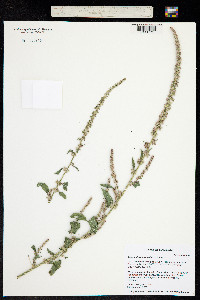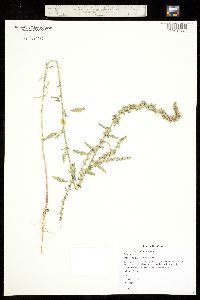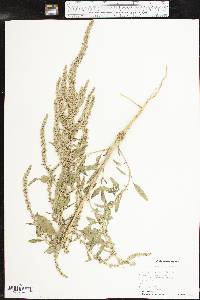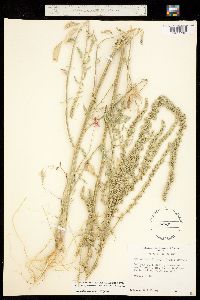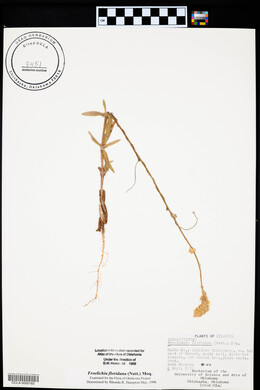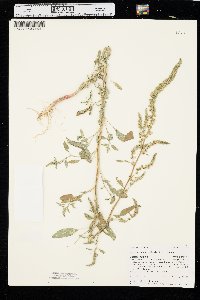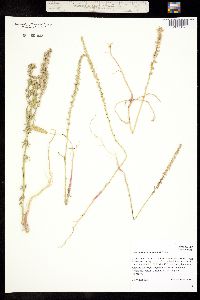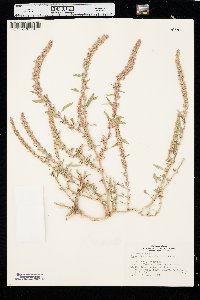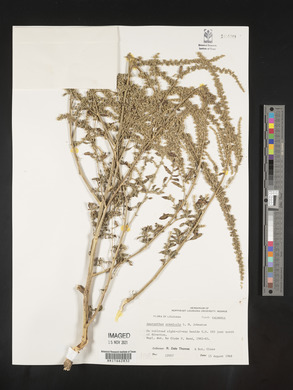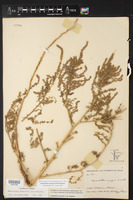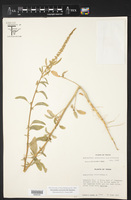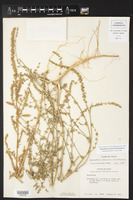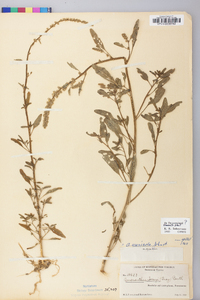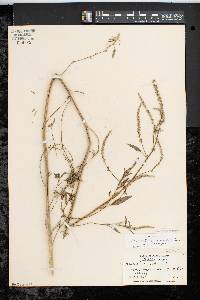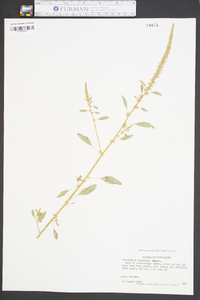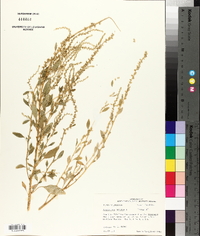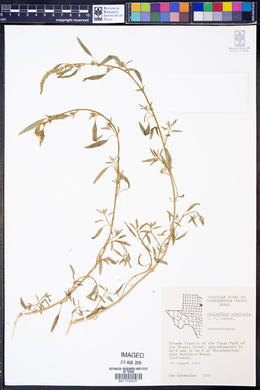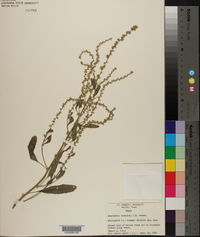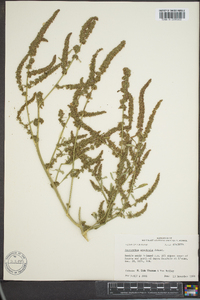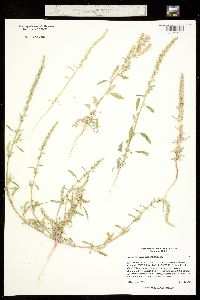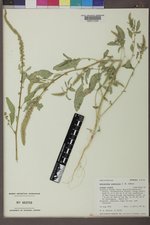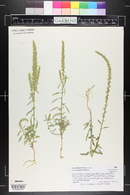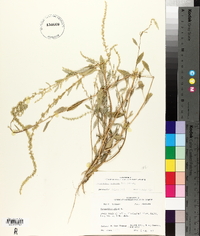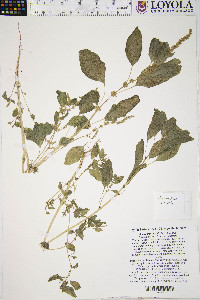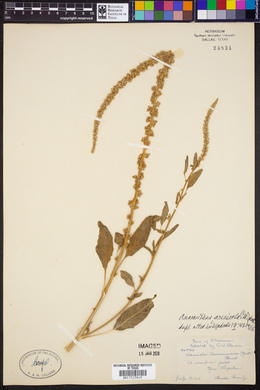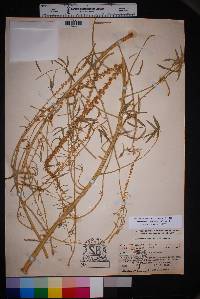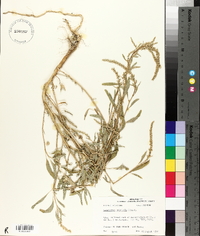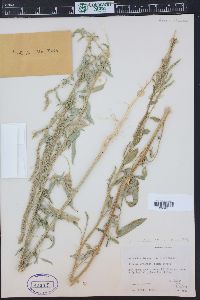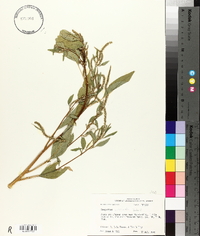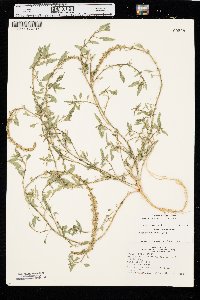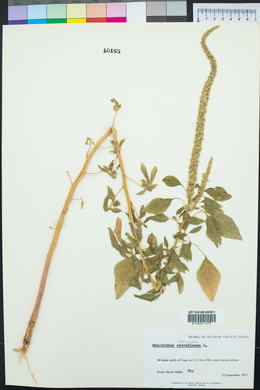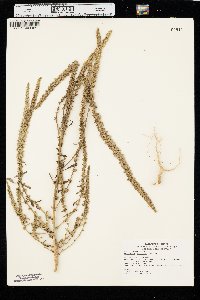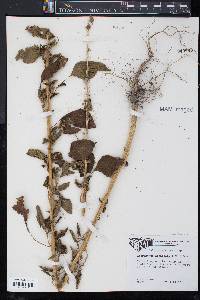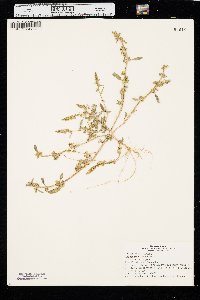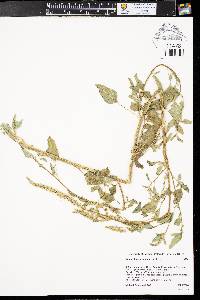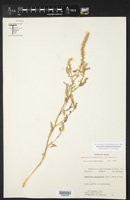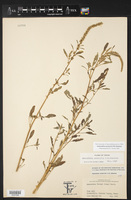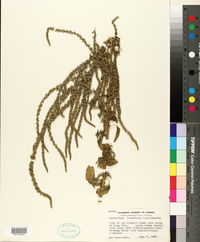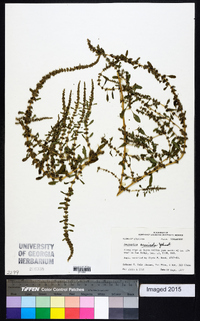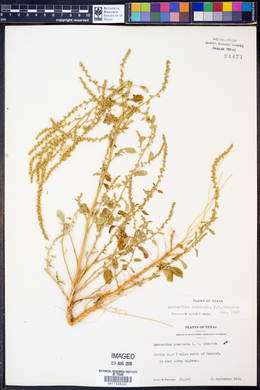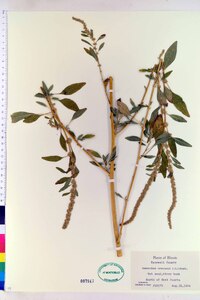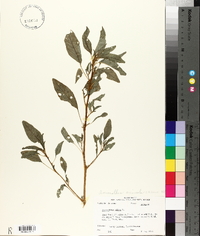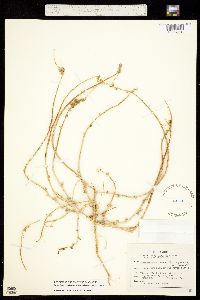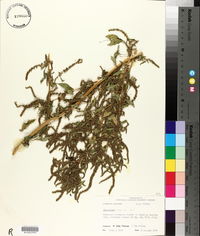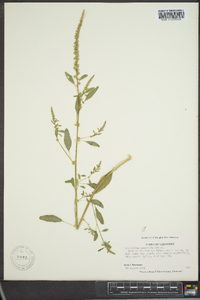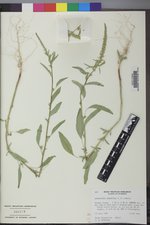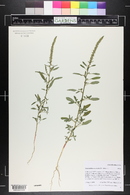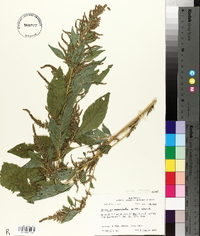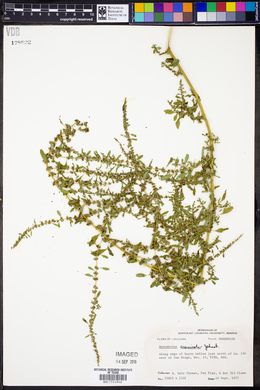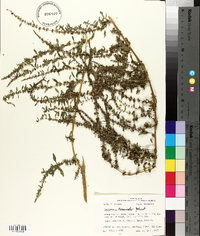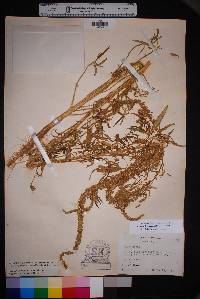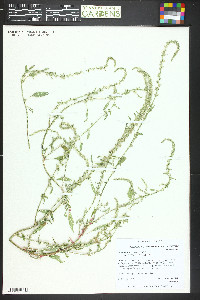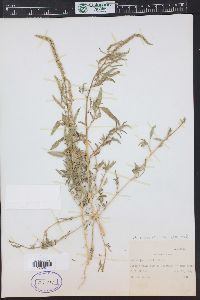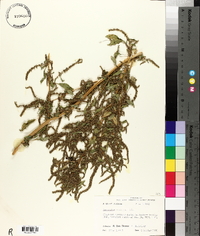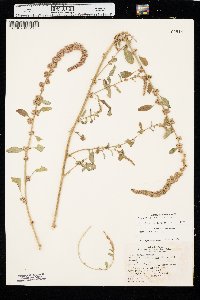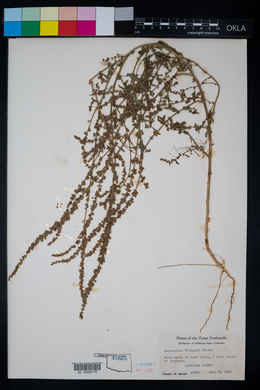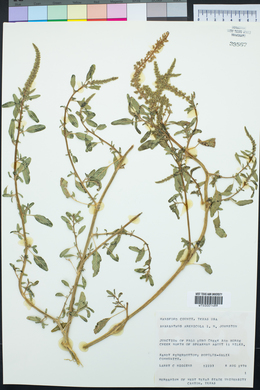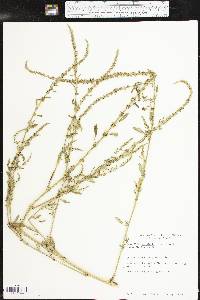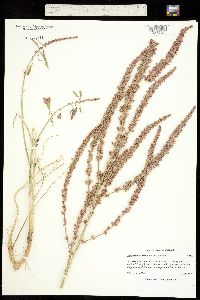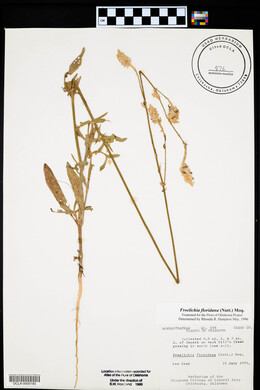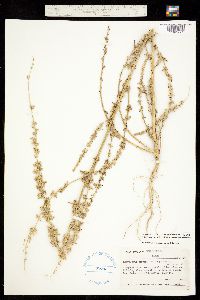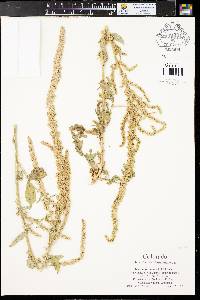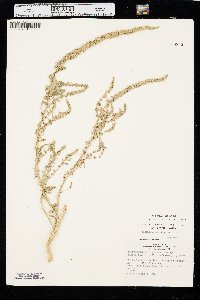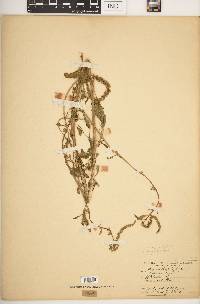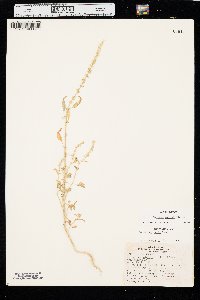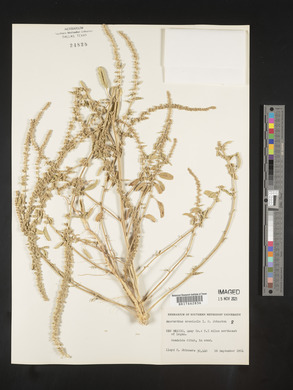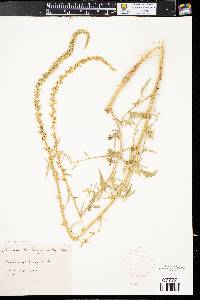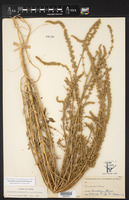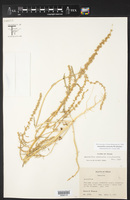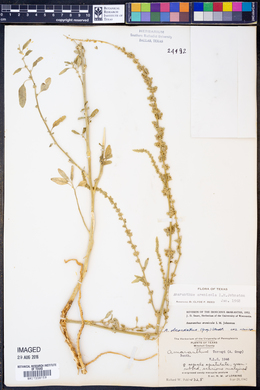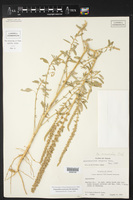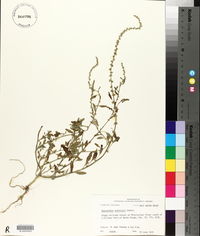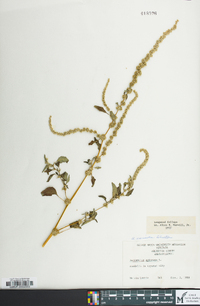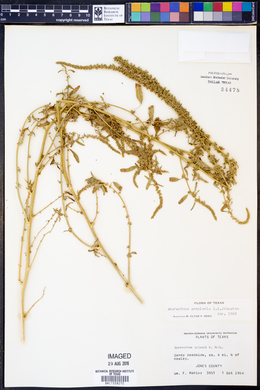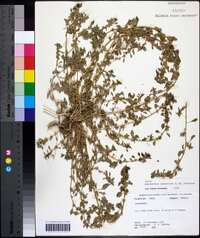
|
|
|
|
Family: Amaranthaceae
Sandhill Amaranth, more...torrey amaranth
|
Plants glabrous or nearly so. Stems erect, usually branched or occasionally ± simple, 0.4-1.5(-2) m; branches sometimes ascending. Leaves: petiole shorter than or rarely ± equaling blade; blade mostly narrowly ovate, obovate, elliptic, or lanceolate, 1.5-8 × 0.5-3 cm, thin and soft, base cuneate to nearly rounded, margins entire, plane or irregularly undulate, apex subacute to obtuse, with terminal mucro. Inflorescences mostly terminal, spikes to panicles, erect to nodding, rarely with axillary clusters in proximal part of plant. Bracts: of pistillate flowers with short, excurrent midrib, (1.5-)2-2.5 mm, equaling tepals or nearly so, apex acute or acuminate; of staminate flowers with prominent midribs, 2-3.5 mm, shorter than tepals, apex acute. Pistillate flowers: tepals spatulate, 1.5-2.5 mm, apex obtuse, with terminal mucro; style branches ± erect; stigmas 2-3. Staminate flowers: tepals 5, equal or subequal, 3 mm, apex obtuse to subacute; inner tepals with apex indistinctly mucronulate; stamens 5. Utricles light brown to brown, subglobose, 1.5-2 mm, shorter than tepals, walls thin, usually smooth. Seeds dark reddish brown, (0.9-)1-1.2 mm diam., shiny. Flowering summer-fall. Sandy habitats, sand hills, riverbanks, creeks, lakes, disturbed areas, agricultural fields; 0-2000 m; Ariz., Ark., Calif., Colo., Ill., Ind., Iowa, Kans., Ky., La., Mich., Mo., Mont., Nebr., Nev., N.J., N.Mex., Okla., Pa., S.Dak., Tenn., Tex., Va., Wis., Wyo. Amaranthus arenicola is native to the central and southwestern Great Plains, from Texas to Nebraska or South Dakota, and occurs as occasionally introduced in other regions of North America and in Europe, but it is not naturalized. However, many staminate specimens of A. tuberculatus have been misidentified as this species, and some of the state references listed above may be in error.
FNA 2004 Duration: Annual Nativity: Native Lifeform: Forb/Herb General: Herbaceous annuals, to 1.5 m tall, stems erect to ascending, simple to branching, herbage glabrous or nearly so, the stems without nodal spines. Leaves: Alternate, obovate to elliptic or lanceolate, 1.5-8 cm long, 0.5-3 cm wide, thin and soft, margins entire to slightly undulate, bases cuneate to rounded, tips rounded or subacute with mucronate tips, petioles shorter than or equaling the blade. Flowers: Small, green, apetalous, with staminate and pistillate flowers in dense glomerules on elongate spikes; pistillate flowers with spatulate tepals 1.5-2.5 mm long, apices obtuse with mucronate tips, style branches more or less erect, stigmas 2-3; staminate flowers with 5 tepals, these equal to subequal, 3 mm long, apices obtuse to subacute, stamens 5; bracts of the pistillate flowers with short, excurrent midribs 2-2.5 mm long (midribs extending beyond the tip), equaling tepals or nearly so, bracts of staminate flowers shorter than the tepals, 2-3.5 mm long, with prominent midribs, inflorescences of terminal spikes. Fruits: Subglobose utricles 1.5-2 mm long, (shorter than the tepals), light brown to brown, surfaces smooth, with thin walls. Seeds 1 mm in diameter, dark reddish brown with shiny surfaces. Ecology: Found on sandy soils on hills, riverbanks, creeks, lakes, agricultural and disturbed areas, from 0-7,000 ft (0-2134 m); flowering summer-fall. Distribution: Widespread across much of the United States, FNA notes that this species may be introduced into non-native areas, and is not thought to occur in Arizona, Utah, and Nevada, but is noted as present in New Mexico, California, and Texas, among many other stat Notes: Good indicators for this species are the annual duration, the soft, thin leaves, the 1.5-2 mm utricles, (these dehiscent) along with the rounded apices of the outer tepals on the staminate flowers. This species is not found in Kearney and Peebles, look to FNA for a good key to this genus and species. Ethnobotany: Leaves boiled and eaten with meat. Synonyms: Amaranthus torreyi Editor: LCrumbacher 2012 Etymology: Amaranthus comes from the Greek amarantos, "unfading," referring to the long-lasting flowers, while arenicola means a dweller on sand. Dioecious; erect, to 2 m; lvs long-petioled, oblong to lanceolate, 2-8 cm; terminal thyrse 1-4 dm, 1 cm thick, nearly continuous, the lateral ones shorter; bracts 1.5-2.5 mm, mostly shorter than the sep, with heavy, not or scarcely excurrent midvein; male fls with 5 subequal sep, these 2-3 mm, obtuse, apiculate, but the dark midvein not excurrent; female fls with 5 recurved-spatulate sep, the outer 2-2.5 mm, the inner 1.5-2 mm, all emarginate or obtuse, but the outer apiculate; fr 1.5 mm, circumscissile at the middle; style-branches usually 2; seed 1- 1.2 mm, round, dark reddish-brown; 2n=32. Dry, commonly sandy places; w. Mo. to N.D., Mont., and Tex., and intr. in disturbed soil at scattered stations e. to the Atlantic. (A. torreyi, misapplied) Gleason, Henry A. & Cronquist, Arthur J. 1991. Manual of vascular plants of northeastern United States and adjacent Canada. lxxv + 910 pp. ©The New York Botanical Garden. All rights reserved. Used by permission. |
This project was made possible in part by the Institute of Museum and Library Services [MG-70-19-0057-19].
Powered by Symbiota


